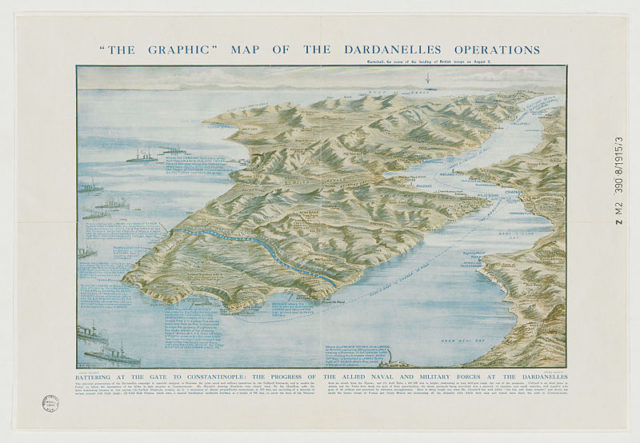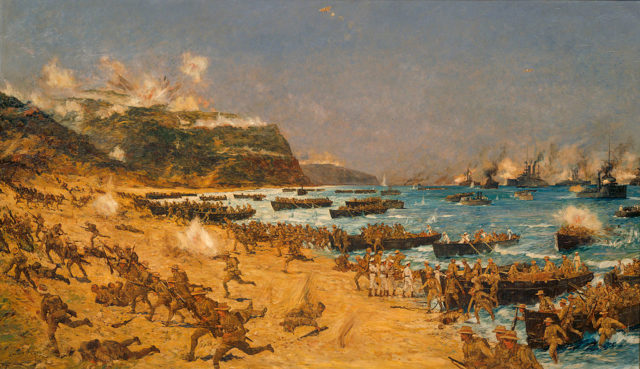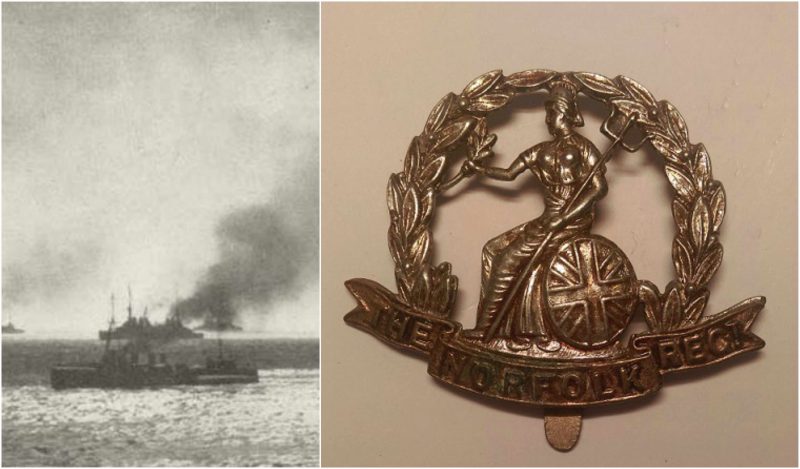During World War I, a military unit created by King Edward VII and known as the 5th Battalion Norfolk Regiment, “The Sandringhams,” or more commonly known as “The Norfolks,” vanished from the face of the earth.
The disappearance took place on the Gallipoli Peninsula, part of the Ottoman Empire. Their vanishing couldn’t be supported by any logical theory, hence, supernatural ones were adopted. And when it comes to supernatural, people’s minds can be very creative. They just need a trigger.
The objective of the Allied Gallipoli campaign was securing the Dardanelles, a natural strait that separates European Turkey and Asian Turkey. It connects the Mediterranean with the Black Sea, providing a sea route to Russia. No wonder Britain and France were eager to seize it, but their amphibious and naval assault against the Ottoman Empire ended unsuccessfully. However, while there was still hope for the Allies, in the peak of the bloody campaign, the new Norfolk military unit was established. The men of the regiment had grown up together and now they went to war together.

The Norfolk Regiment was made up of 16 officers and 250 men led by Sir Horace Proctor-Beauchamp. On the 30th of July 1915, the regiment set out from Liverpool to the Gallipoli Peninsula, arriving on the 10th of August. Only two days after their arrival, the 5th Norfolk got an order to launch an attack against the Turks, which turned out to be a bad decision in every sense. First of all, many of the men were in poor physical condition due to seasickness, lack of sleep, and the sudden brutally high temperature and arid climate of the area. Many of them were sick with dysentery, and spirits in general were low.
On top of everything, they had poor supplies, inaccurate maps, and lack of water, yet they were about to attack the Turkish fighters in broad daylight on their home terrain. As if that were not bad enough, the men were completely confused, with some of them thinking that the objective of the mission was to attack the village of Anafarta Saga, while others believed they were supposed to simply clear the way.

The men instantly made a mistake and separated from the rest of the 163rd Brigade, turning in a wrong direction. Although they must have realized their mistake, the men continued to advance toward Kavak Tepe without reinforcement or support. They were met with a rain of machine-gun fire and numerous snipers. And yet, the Norfolk Regiment, along with Colonel Beauchamp, managed to push the Turks back toward a forest with a storm of artillery fire. They continued into the burning forest–and that was the last anyone would see of them.

The battalion never made it back from the forest; not one returned to tell what happened. Nor were their bodies found on the field. They simply disappeared from the face of the earth. The British Commander-in-Chief in Gallipoli, General Sir Ian Hamilton, was just as confused as everyone else.
It was very strange indeed, especially since nobody seemed to come up with a possible, logical explanation.
The men’s families were distraught and confused. They had nothing to console themselves with, just rumors and speculation. The only official statement being that their loved ones were reported as missing. Even King George V could only obtain information that the Norfolks had conducted themselves with “ardour and dash.”
Queen Alexandra tried to gain more information from the American ambassador based in Constantinople, asking if some of the men missing could be found in the Turkish prisoner of war camps. The Red Cross was contacted as well, messages were published in papers, but all to no avail. After the war was over, no trace of the men was ever found in any of the prison camps.
Years later, in 1965, a former sailor from New Zealand, Frederick Reichardt, issued a never-before-heard testimony. He claimed to have witnessed the strange disappearance of the 5th Norfolks in 1915. His was a rather supernatural account. His claim, supported by three other veterans, was that on that particular afternoon they saw a formation of six or eight loaf-shaped clouds that hovered over the area where the Sandringhams were fighting. One of these low-lying clouds descended even lower over the men and after an hour or so, it rose “very unobtrusively” and joined the other clouds and sailed off. When the men on the ground could see the forest clearly, there was no sign of the soldiers. Even though this story was unreliable and inconsistent, people felt compelled to share it.

There was a report in 1919, discovered later, by the battalion’s chaplain, the Reverend Pierrepoint Edwards, who claimed that he found the missing bodies. According to Edwards, only two of the deceased could be identified: Privates Barnaby and Carter. He found the bodies spread across an area of approximately one square mile, at least 800 yards away from the Turkish front line.
Further, the Reverend reported that the men evidently were killed in a farm as the owner of the place, a local Turk, told them that when he came back after the battle he found his farm covered with the bodies of British soldiers. He said he threw them into a small ravine. For unclear reasons, the Reverend’s report was not believed.
Whether the men were all killed in battle and their bodies not recovered, they were killed in a camp, or met some other bizarre fate, the complete disappearance of the battalion is still considered a mystery.
